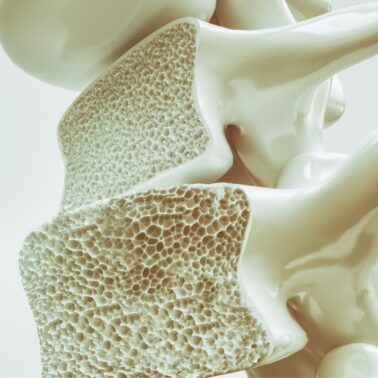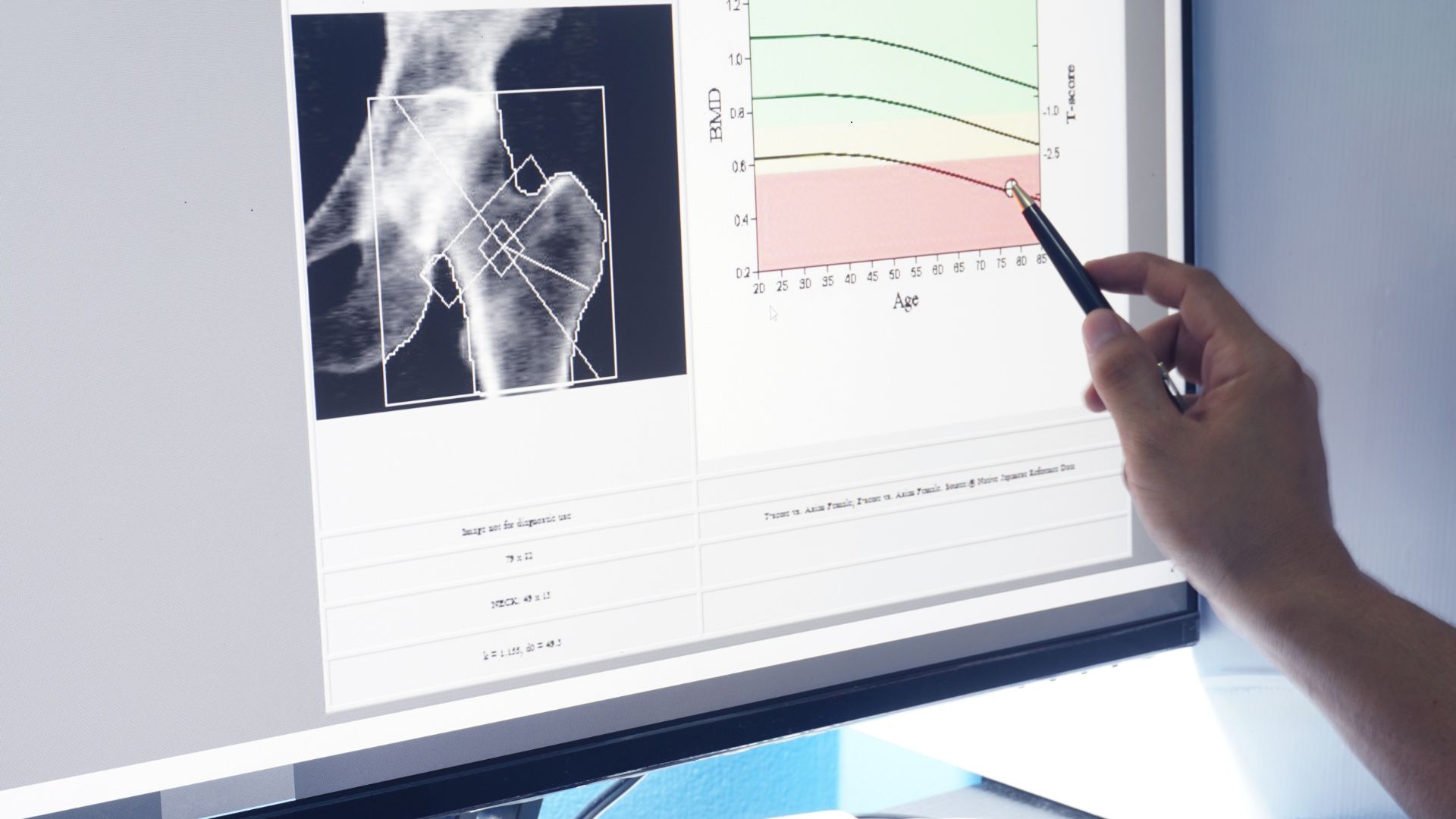
How Older Australians Can Benefit from Early Osteoporosis Screening
Article reviewed by Dr. Richard Perry.
Osteoporosis is a prevalent condition among older Australians. It significantly impacts your health and daily living by increasing your risk of fractures.
This disease gradually weakens your bones, making them fragile and more likely to break, often with life-altering consequences. Early osteoporosis screening is pivotal in detecting the disease before it leads to serious fractures.
By prioritising early screening, you can take control of your bone health, reduce your risk of fractures, and maintain your independence and quality of life.
Want to learn more about osteoporosis and how it can affect you? This article is for you! Let’s dive in.
The Importance of Osteoporosis Screening
Osteoporosis affects over 1 million Australians and is prevalent mainly in the elderly. This condition leads to weakened bones, making them much more susceptible to fractures from minor falls or even daily activities.

How common is it?
Osteoporosis is a significant health concern in Australia, particularly in those aged 50 or over.. Based on a recent study measuring bone density in a population sample, the prevalence of osteoporosis among those aged 50 and over was estimated to be 23% of women and 6% of men. This estimate includes both diagnosed and undiagnosed cases of osteoporosis.
How important is early detection?
The key to managing osteoporosis effectively lies in early detection. Screening can identify individuals at risk before a fracture occurs, leading to interventions that can significantly reduce the risk of bone breaks.
How can I prevent complications?
Through early screening, you can adopt lifestyle changes and treatments that strengthen bone density and health. This is crucial for preventing the severe complications associated with osteoporosis, like hip fractures, which can drastically affect your mobility and independence.
Risk Factors for Osteoporosis in Older Australians
Understanding the risk factors for osteoporosis is crucial, especially for older Australians. Here’s what contributes to the heightened risk of developing this condition:
- Age: The primary risk factor for osteoporosis. As you age, your bones naturally lose density and strength. People over the age of 50 are at an increased risk.
- Gender: Women are more prone to osteoporosis, particularly those who have gone through menopause. This is due to the decrease in estrogen, a hormone that protects bone density.
- Family History: A family history of osteoporosis or fractures in a parent or sibling can increase your risk, indicating a genetic predisposition to weaker bones.
- Lifestyle Choices: Smoking, excessive alcohol consumption, and a diet low in calcium and vitamin D contribute to bone density loss. A sedentary lifestyle with limited physical activity can further exacerbate your risk level.
- Medical Conditions and Medications: Certain conditions, like rheumatoid arthritis, and the long-term use of steroids, can lead to decreased bone strength.
For older Australians, these factors tend to combine, making the early screening and management of osteoporosis even more essential.
Being aware of these risk factors lets you take proactive steps towards maintaining your bone health and preventing this disease.
Understanding Bone Density Testing
Bone density testing is critical for the diagnosis and management of osteoporosis, giving a window into the health and strength of your bones. Here’s what you need to know:
What is bone density testing?
This non-invasive procedure measures the amount of calcium and other minerals in a segment of your bone, providing essential insights into your bone health. The results help in diagnosing osteoporosis and assessing fracture risk.
What are the screening methods?
The most common and reliable method is the DEXA (Dual-Energy X-ray Absorptiometry) scan, otherwise referred to as a DXA scan or a Bone Mineral Densitometry examination. It is available at over 20 of PRP’s clinics, offering precise measurements of the spine and hip, areas that are most vulnerable to fractures caused by osteoporosis.

What is the procedure?
A Bone Mineral Densitometry test is a straightforward and comfortable procedure that doesn’t involve any injections. You’ll change into a gown for the test. A Bone Mineral Densitometry test is a straightforward and comfortable procedure that doesn’t involve any injections. You’ll change into a gown for the test. During the examination, you’ll be asked to lie down in two distinct positions for an accurate measurement of both your lower spine and one of your hips.
During the test, a radiographer will stay in the room with you. This method uses a minimal amount of radiation, so it’s essential to let the staff know if you could be pregnant. The process is quick, takes about 15–30 minutes, and requires no special preparation. DEXA scans are crucial for patients at risk of osteoporosis, providing a clear picture of bone health and helping doctors tailor treatment plans.
Understanding your bone density and fracture risk through these scans can guide lifestyle changes and interventions to strengthen your bones, safeguarding your mobility, independence, and quality of life.
Benefits and Recommended Age for Early Osteoporosis Screening
Early osteoporosis screening is a critical step in safeguarding your health and well-being, especially if you’re an older Australian. By detecting changes in bone density early, you can take proactive measures to prevent fractures, achieve better outcomes from treatments, and enjoy a higher quality of life.
Here’s why and when screening is recommended:
- Prevention: Screening can identify the early signs of bone mass loss before fractures occur, allowing for timely preventative action.
- Treatment Outcomes: Early diagnosis leads to more effective management and treatment strategies, potentially slowing the progression of osteoporosis.
- Quality of Life: By preventing fractures, especially a hip fracture, you can maintain your independence and mobility for longer.
When to Start Screening
- General Guidelines: Australian health authorities recommend that men and women aged 50 and over with risk factors for osteoporosis should undergo a bone density scan.
- Evidence-Based Practice: The decision to start screening should be based on a combination of risk factors, including your family history of osteoporosis, previous fractures, lifestyle factors, and any relevant symptoms indicating bone loss.
- Specific Recommendations: For individuals without apparent risk factors, starting at age 65 for women and 70 for men can be a prudent approach to catch the early signs of osteopenia or osteoporosis.
Lifestyle Changes to Support Stronger Bones
Maintaining strong bones is essential for your overall health, especially as you age. Incorporating simple lifestyle changes can significantly impact your bone health, helping to prevent bone loss and reduce your risk of fractures.
Here are practical tips for stronger bones:
- Exercise: Regular weight-bearing and resistance exercises strengthen bones and muscles. Aim for at least 150 minutes a week.
- Nutrition: A balanced diet rich in calcium and vitamin D supports bone health. Dairy products, leafy greens, and fish are excellent sources.

- Sunlight Exposure: Vitamin D is crucial for your bone health. Moderate sunlight exposure can help your body produce enough vitamin D.
- Quit Smoking and Limit Alcohol: Smoking and excessive alcohol consumption can weaken your bones. Seek resources or a GP’s advice to quit smoking and moderate your alcohol intake.
- Medications: Some medicines can affect bone density. Discuss with your GP the impact of your current medications on bone health and explore alternatives if necessary.
Regular check-ups with your GP can help monitor bone health and make sure that you’re on the right track with these lifestyle modifications. Accessing online resources and joining programs focused on bone health can also provide valuable information and support.
Securing Your Future: The Power of Early Osteoporosis Screening
Early screening for osteoporosis is a crucial step in maintaining your health and independence as you age.
By identifying the risk of bone loss early, you can take proactive measures to prevent fractures, enhance treatment outcomes, and improve your quality of life.
Don’t wait for symptoms to appear. Osteoporosis often remains unnoticed until a fracture occurs. Consult with your healthcare provider to get personalised advice, and consider scheduling a screening today.
Take the Next Step: Schedule Your Screening with PRP Diagnostic Imaging
Osteoporosis doesn’t have to be an inevitable part of aging. Take charge of your bone health by discussing osteoporosis screening options with your GP.
PRP Diagnostic Imaging is here to support you. Our advanced screening options are tailored to safeguard your well-being. If you’re ready to take a proactive approach to your bone health, visit our DEXA scan service page or contact us directly to learn more about how our screening services can help you maintain strong bones and a healthy lifestyle.
